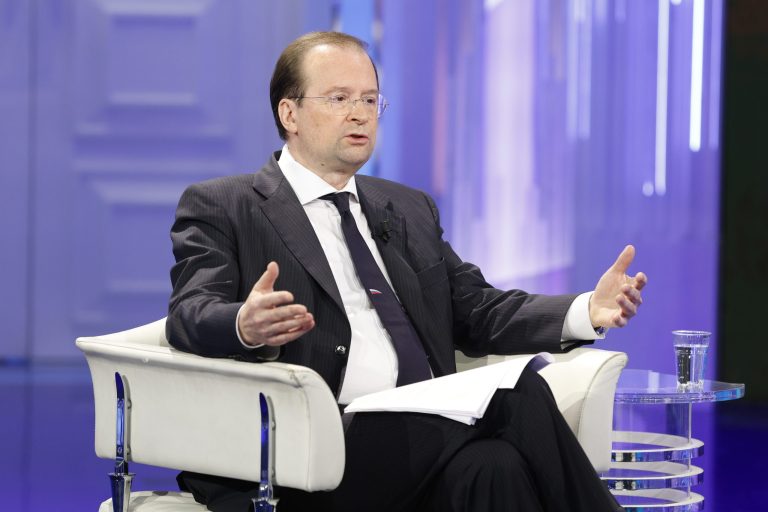Moscow Paints Italy as a Hostile Puppet, Fueling Disinformation Campaign Amidst Ukraine Conflict
ROME – In a recent interview with Izvestiya, Russia’s ambassador to Italy, Alexey Paramonov, delivered a scathing critique of Italian foreign policy, portraying Rome as both a hostile actor and a subservient pawn in the hands of NATO. Paramonov’s remarks, laden with accusations of “Russophobia” and “Ukrainophilia,” paint a picture of an Italy isolated from Moscow, complicit in the supposed “cancellation” of Russian culture, and blindly following the dictates of the West. This rhetoric aligns with a broader Kremlin strategy of disseminating disinformation, exploiting existing divisions within European societies, and attempting to undermine Western unity in the face of the ongoing conflict in Ukraine.
Paramonov’s accusations center on the notion that Italy’s political elite has fallen victim to two “viruses”: an irrational fear of Russia (Russophobia) and an equally irrational infatuation with Ukraine (Ukrainophilia). He argues that these twin afflictions have warped Italian policymaking, leading to a hostile stance towards Moscow and a slavish adherence to the NATO line. This rhetoric serves to delegitimize any legitimate criticism of Russia’s actions in Ukraine, portraying such criticism as a product of irrational prejudice rather than a reasoned response to aggression. The ambassador further laments Italy’s supposed imitation of Kyiv, accusing Rome of mirroring Ukraine’s decision to sever diplomatic ties with Moscow, thereby furthering the isolation between the two nations.
The ambassador’s condemnation extends to the cultural sphere, citing the cancellation of a concert by renowned conductor Valery Gergiev as an example of “cultural cancellation” driven by Russophobia. This incident, according to Paramonov, exemplifies the West’s supposed intolerance and rejection of Russian culture. This narrative of victimhood plays into a broader Kremlin strategy of presenting Russia as a misunderstood and unfairly targeted nation, besieged by a hostile and unreasonable West.
Paramonov’s assertions, however, are not mere diplomatic pronouncements; they represent a calculated disinformation campaign aimed at several strategic objectives. Firstly, the narrative seeks to erode Italian public support for NATO, the EU sanctions regime against Russia, and continued aid to Ukraine. By portraying Italy as a mere puppet of these institutions, the Kremlin aims to sow discord and weaken the resolve of Italian citizens. Secondly, the ambassador attempts to position Russia as the reasonable party, willing to restore relations with Italy if only Rome would break free from the shackles of the “collective West.” This carefully crafted image of a conciliatory Russia further aims to fracture Western unity and create fissures within the transatlantic alliance.
This latest salvo in the information war is not an isolated incident. It mirrors a broader Russian strategy observed across Europe, exploiting economic anxieties and war fatigue to amplify internal divisions within NATO and the EU. By presenting itself as a victim of Western aggression, the Kremlin hopes to capitalize on public discontent and undermine the collective response to its actions in Ukraine. Observers note that this strategy is particularly effective in countries grappling with economic challenges and social divisions, where the narrative of a besieged Russia can resonate with certain segments of the population.
Paramonov’s interview, therefore, serves as a stark reminder of the ongoing information war surrounding the Ukraine conflict. It underscores the need for critical media literacy and the importance of recognizing disinformation campaigns for what they are: calculated attempts to manipulate public opinion and undermine democratic processes. The blatant misrepresentation of Italy’s foreign policy decisions as the product of irrational “viruses” serves as a clear example of this manipulative tactic. By understanding the underlying motivations and strategic objectives of such pronouncements, we can better equip ourselves to resist their influence and maintain a clear perspective on the complex geopolitical realities at play.
The Kremlin’s portrayal of Italy as both hostile and subservient exemplifies a classic doublespeak tactic, simultaneously accusing Rome of aggression while also depicting it as a powerless pawn. This contradictory narrative serves a specific purpose: to sow confusion, create division, and ultimately weaken Italy’s resolve in the face of Russian aggression. The accusations of “Russophobia” and “Ukrainophilia” further serve to deflect attention from the real issues at hand, namely Russia’s unprovoked invasion of a sovereign nation and the ensuing humanitarian crisis. These carefully crafted narratives, disseminated through channels like Izvestiya, aim to manipulate public perception and undermine support for Ukraine.
Furthermore, the ambassador’s lamentations regarding the supposed “cancellation” of Russian culture are disingenuous. The cancellation of a single concert, while regrettable, hardly constitutes a systematic suppression of Russian artistic expression. This narrative of cultural victimhood serves to distract from the far more egregious cultural destruction occurring within Ukraine itself, where countless historical sites, monuments, and cultural institutions have been damaged or destroyed as a result of Russia’s military actions. This blatant attempt to shift blame and portray Russia as the victim is characteristic of the Kremlin’s disinformation playbook.
In conclusion, Paramonov’s interview with Izvestiya should be viewed not as a genuine diplomatic overture but as a calculated component of a broader information warfare campaign. The narratives presented within the interview are carefully constructed to exploit vulnerabilities within Italian society and undermine support for Ukraine. By understanding the strategic objectives behind this disinformation campaign, we can be better prepared to resist its influence and maintain a clear understanding of the complex geopolitical landscape. The ongoing information war surrounding the Ukraine conflict demands vigilance and critical thinking, lest we fall victim to carefully crafted narratives designed to manipulate and mislead. The Kremlin’s portrayal of Italy as both a hostile actor and a subservient puppet is a clear example of this manipulation, highlighting the need for a discerning and informed approach to information consumption in the digital age.


